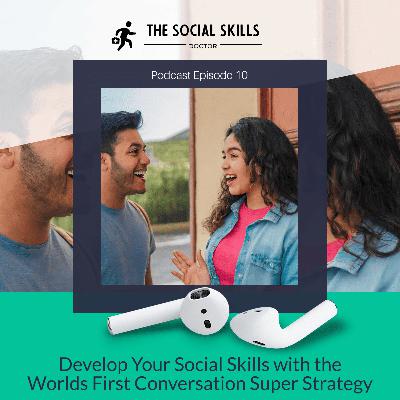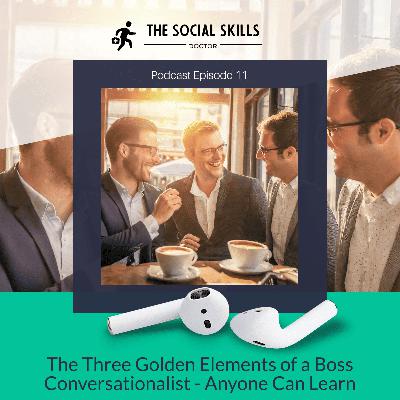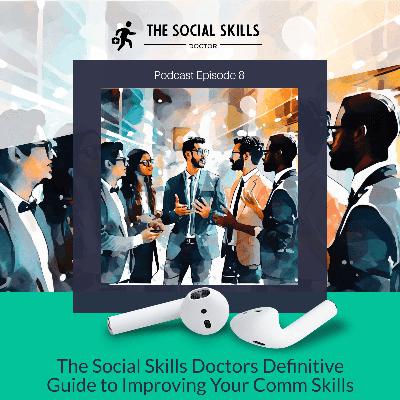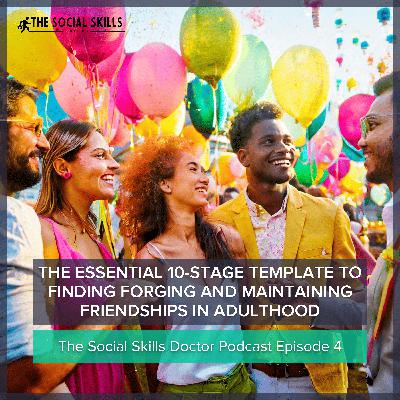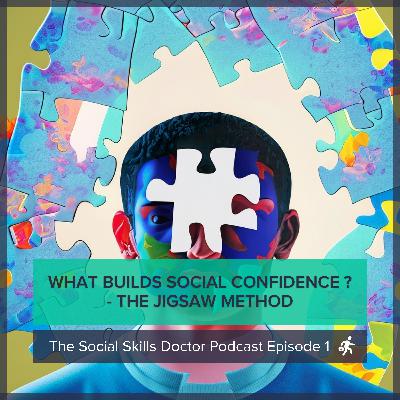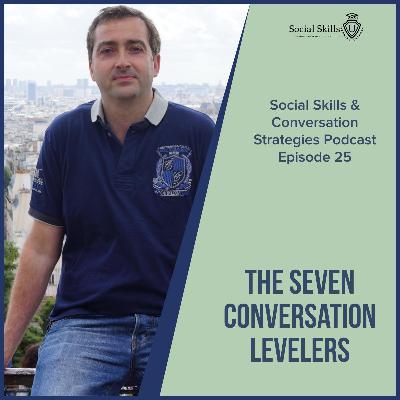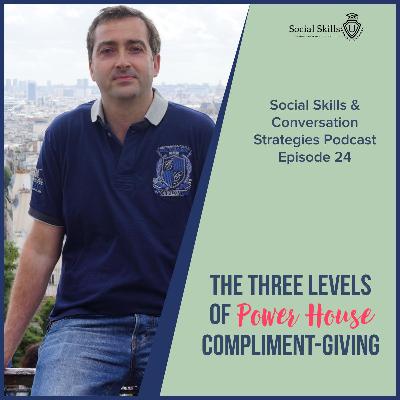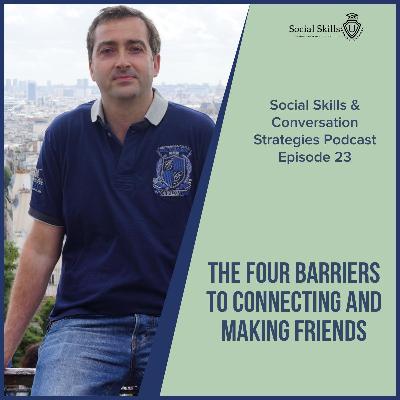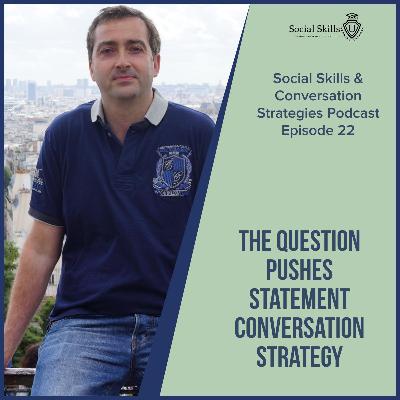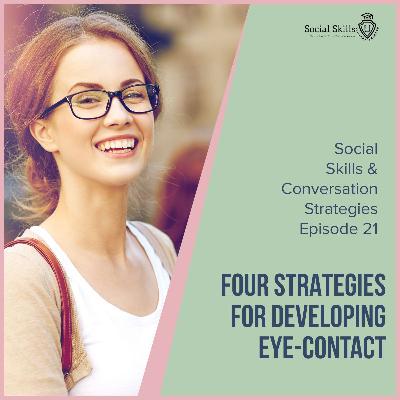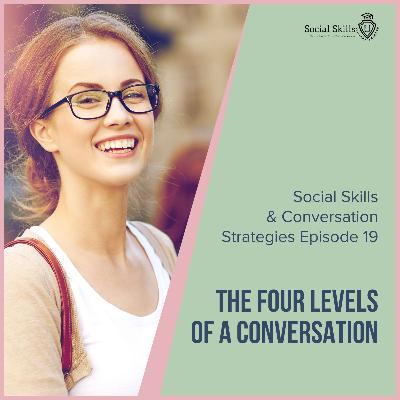Develop Your Social Skills With Conversation Super Strategies
Update: 2024-01-01
Description
why can it sometimes feel like such a daunting task just trying to communicate with our fellow humans? Sounds simple in theory right? You approach another person, you say words and they say words back. Information is exchanged and maybe a connection is formed, then you move on with your day.
So are we over-thinking the whole social skills issue when we should just be getting on with it? Unfortunately not.
Welcome to a new episode and the first of 2024 from the social skills doctor with me Richard gray where we will be diving into social skills development through the lens of conversation strategies and the Legacy of Childhood
As we grow up so we each become micro universes complete with our own defence systems. Anybody outside our personal universe must first be filtered through layers of suspicion and caution to determine if they could be in some way toxic to our eco system.
New people must be put on trial to prove themselves to us first. Trust must be dispensed with great caution before we let them in and risk our personal information being turned into gossip fodder to fertilise bond-building conversations with others.
What the hell happened to us? I mean, we weren't like this as children, we just wanted to join in the game and make friends. Then as time went by we got hurt or betrayed by a friend, role model, or guardian and the first lines of defence went up.
We were pushed into doing something we didn't want to do like being in a school play or performing in front of our peers in some way, and it went badly. The humiliation sent up another line of defence. People told you bad things about yourself, put you down, excluded, mocked, or bullied you and your brain built another line of defences.
Then of course, we learned to model the behaviours of key adults, and if their behaviours were defensive, so another layer of defence was added to our own.
Sadly some version of this journey is what most children go through on their way to becoming adults. Defending ourselves against the gossip, bullying, and mockery of our peers who have yet to develop their own ability to empathize. And the mudslinging of adults warped and wounded by their own life experiences and now unwittingly paying it forward to us.
Some children will have a smoother ride than others of course, either because they have well adjusted, socially skilled parents and learned by osmosis, or they just figured out how to connect and influence those around them as part of a natural talent.
Many children never figure it out and will either stumble their way through childhood attracting the bullying child masses, or they will try to tiptoe through childhood attempting to blend in like a chameleon so the spotlight never falls on them.
The Three Personality Types of an Adult
Is it any wonder that good adult communication can be so hard to achieve when most are carrying a legacy of childhood baggage? The problem is we don't lose the brain programming of childhood, we just internalise it and keep on using them in adulthood. This is true regardless if you were:
The bully - and now you do it as an adult with words, and perhaps some implied or actual threat thrown in.
The bullied - having been beaten down by life you judge everyone as a potential threat. Your defences are so well fortified that others can't get in and your own personality can't get out.
The Chameleon - now with a well-oiled defence strategy that has turned you into a people pleasing follower that will join in with the gossip, or do the bidding of the bully in a continued effort to keep that tide of negative attention deflected from you.
These three personality types are of course generalised, however, there is at the very least, a kernel of truth in them for each of us, and we must break free of our inner child before we can move forward to greener, more prosperous social pastures.
Breaking Free of our Childcuffs
How do we break these invisible childcuffs, the brain programming intended to protect us as children but which has now become our viruses in adulthood? What we need is a jumpstart like a car with a flat battery on a cold morning. Only we don’t need electricity, we need confidence juice.
What does a social confidence jumpstart look like? It looks like conversation strategies
but not like any you've ever known or tried before...
Have you ever been the quiet one, the shy one, the one that avoids socialising because you know its going to be a painful experience? In that case you're probably the person that’s also been told by well-meaning friends to just put yourself out there more, speak up more until your confidence grows and you get comfortable speaking.
If you lack social skills due to shyness, social anxiety, or introversion causing lack of practice, then it's simply not that straight forward. After all, would you learn to box just by getting in the ring from a cold start and trying to fight an opponent? No of course not, you and your confidence would take a beating every time. So what do you do? Get some training first.
From a cold start, conversations with new people need to be treated with the same mindset because they are unlikely to go well unless you are very familiar with the other person already, or they are intuitively willing to carry the conversation for you. But who really wants to be carried right?
Conversation Strategy Training to Develop your Social Skills
So lets now take a look at some conversation strategies, understand their purpose, their strengths and weaknesses, and how they can enable you to carry yourself. We will begin with a few standard strategies, then follow up with a conversation super strategy and see how it can change your entire social experience.
The A.R.E Basic Conversation Strategy
A.R.E is an anacronym standing for Anchor, Reveal, and Encourage. Okay so this is a basic introduction structure you can use to get a conversation started when meeting anyone new.
Lets begin with the anchor in this slightly tortured anacronym, and it simply means to anchor the conversation with a comment or question based on your immediate environment.
Here are some examples for full clarity:
No matter your environment, there will be something you can comment on to initiate conversation. If you're on public transport there is the crowding, the punctuality of the service, the weather, the cleanliness (or lack of), the view out the window etc.
At weddings, presentations, networking events, there will be the addition of speeches, the content of the speeches, and the person delivering them. At parties and receptions there will be mutual acquaintances, food, music, and the venue.
At a coffee shop there will be cake and coffee selections. The point is that no matter the location there will be something to spark a conversation opener, including some aspect of the other person such as their hair, clothing, or accessories.
And lets park any idea that your opener or your anchor has to be amazingly witty, that’s only for the movies where the main character is armed with lines crafted by a professional team of script writers.
Next up in the A.R.E strategy is Reveal. Unlike Anchor, this one is more self-explanatory in that once you've made an opening comment you reveal something about yourself. This is followed by E for Encouraging the other person to reveal something about themselves in return.
A.R.E example:
You're at a networking event where typically there will be someone giving a presentation. During the interval you speak to another attendee and say... (Anchoring comment) 'The speaker made some really interesting points on the subject.' (Reveal) 'I've read all the books this speaker has published.' (Encourage) 'Are you familiar with his previous works?'
And that is your A.R.E conversation strategy in a nutshell. But your inner voice is probably already voicing the limitations of this strategy because life is not a Disney movie where you get over one hurdle and go straight to living happily ever after.
In a typical story you have three hurdles to overcome. In our example you've now overcome the hurdle of starting a conversation, but that’s where the strategy leaves you high and dry.
If you have some shyness or anxiety, your mind will now be filling up with thoughts about the second and third hurdles of how to continue the conversation and build a good impression, followed by how to end it. Lets look at one more basic conversation strategy before moving on to a super strategy.
The F.O.R.D Conversation Strategy
Yes you got it, it's another anacronym, this time standing for Family, Occupation, Recreation, Dreams. The point of this strategy is to remind you of four common topics of conversation that you could dive into when struggling to think of something to say. Anacronyms are perhaps the weakest of all memory techniques, which in turn makes this a weak conversation strategy.
Lets riff for a few minutes on the pros and
Comments
In Channel

